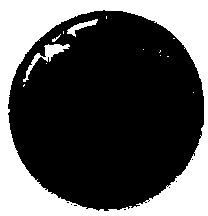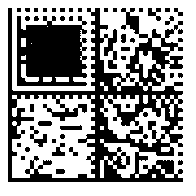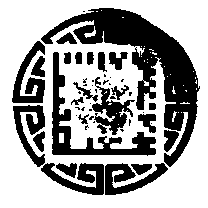Manufacturing method of optical anti-fake membrane, optical anti-fake membrane label, optical anti-fake label and optical anti-fake system
A technology of optical anti-counterfeiting and production method, which is applied in the field of anti-counterfeiting, can solve the problems of inaccurate anti-counterfeiting technology and damage to anti-counterfeiting markers, etc., and achieve the effect of safe and reliable anti-counterfeiting technology, huge social and economic benefits, anti-counterfeiting performance and market monitoring ability.
- Summary
- Abstract
- Description
- Claims
- Application Information
AI Technical Summary
Problems solved by technology
Method used
Image
Examples
Embodiment 1
[0054] Embodiment 1: The applicant discloses a method of making an optical anti-counterfeiting film by using the random scattering and reflection characteristics of physical optics, such as figure 1 As shown, at first the non-transparent dopant is added in the curable transparent or partially transparent liquid material (S101); the curable liquid material of the present invention has a variety of substances, such as paint, transparent epoxy resin, liquid glue etc., other substances are not ruled out, and will not be exhaustive here. The opaque dopant can have an irregular shape or a regular shape. As an example, it can be tiny shredded paper, rubber particles, metal flakes, etc. Other substances are not excluded, and the list is not exhaustive here. Users can make A suitable dopant needs to be selected.
[0055] Then the dopant is mixed with the transparent liquid to make a mixed solution (S102); finally, the mixed solution is made into an optical anti-counterfeiting film (S1...
Embodiment 2
[0058] Embodiment 2: select the transparent plastic produced by U.S. PlastiDipInternational Company as raw material, mix the irregular shape rubber particles of medium density (produced by Japan Sumitomo Rubber Industries Company), it is worth pointing out that the source of selected material is not limited to the present invention companies listed. The coverage of the rubber particles mixed with the transparent plastic is about 5%-90%, and the anti-counterfeiting film made of 5% to 90% coverage has better light-radiation contrast and provides effective light scattering and reflection distribution. . The following experimental data is the distribution of relative adjacent light radiation contrast values under different coverage conditions. The relative adjacent light radiation contrast value is defined as the absolute value of the adjacent point light radiation difference and then takes the weighted average. The larger this value, the more efficient the light radiation and...
Embodiment 3
[0062] Embodiment 3: In this application example, the dopant (as an example, the dopant can still be selected from the rubber particles enumerated in the application example 1) can be mixed into the material for making the film (such as PVC or other plastic film Manufacturing materials), using a plastic film machine to make the mixed solution into a transparent film with impurities. As a preferred embodiment, the film thickness can be controlled within 0.05 mm to 1.5 mm. The film thickness will affect the contrast value of relative adjacent light radiation, and the thicker the film, the smaller the value. The light transmittance of the transparent film can be controlled from 5% to 90%, and the experimental results when the light transmittance is 50% are as follows:
[0063]
PUM
| Property | Measurement | Unit |
|---|---|---|
| Thickness | aaaaa | aaaaa |
| Thickness | aaaaa | aaaaa |
Abstract
Description
Claims
Application Information
 Login to View More
Login to View More - R&D
- Intellectual Property
- Life Sciences
- Materials
- Tech Scout
- Unparalleled Data Quality
- Higher Quality Content
- 60% Fewer Hallucinations
Browse by: Latest US Patents, China's latest patents, Technical Efficacy Thesaurus, Application Domain, Technology Topic, Popular Technical Reports.
© 2025 PatSnap. All rights reserved.Legal|Privacy policy|Modern Slavery Act Transparency Statement|Sitemap|About US| Contact US: help@patsnap.com



